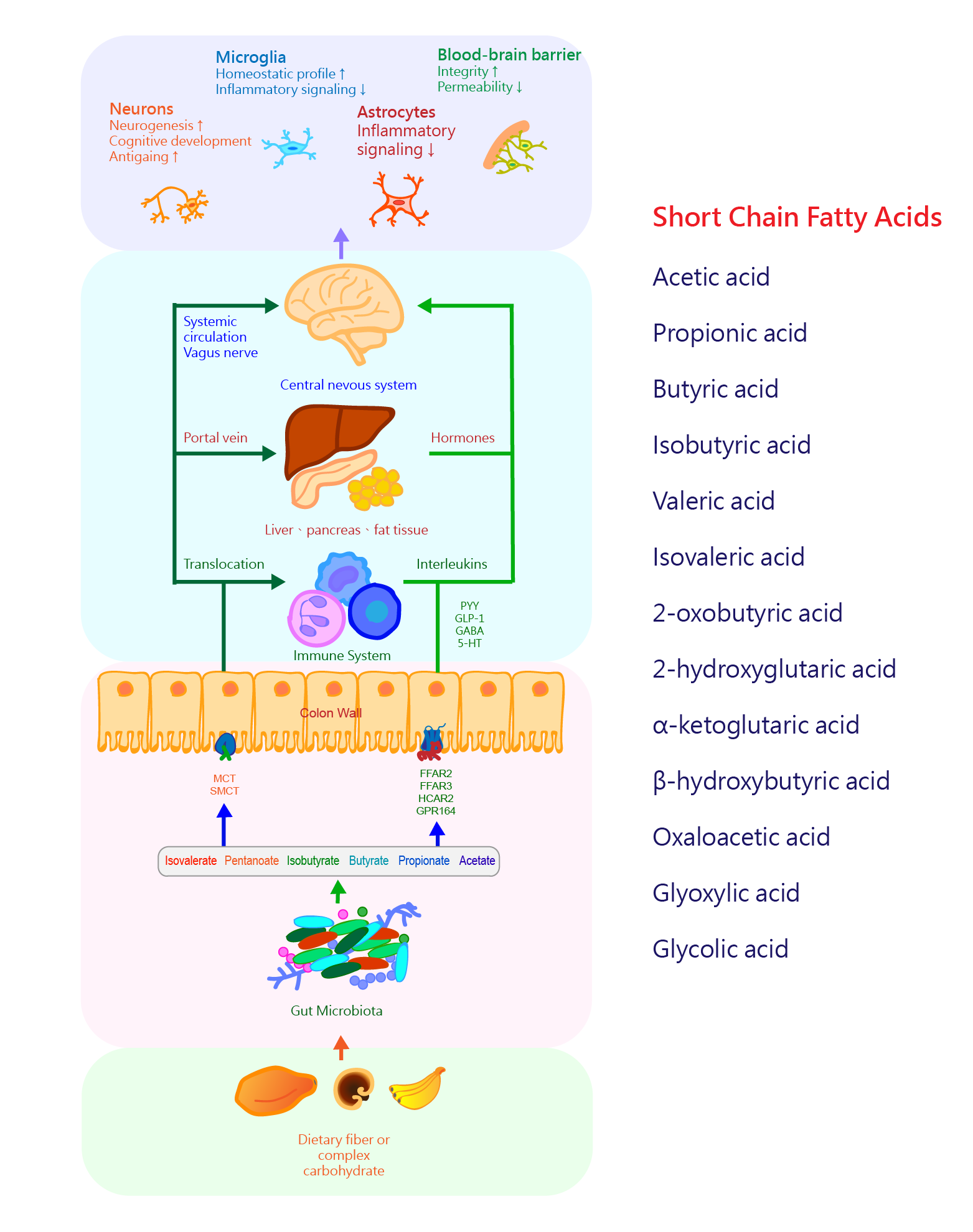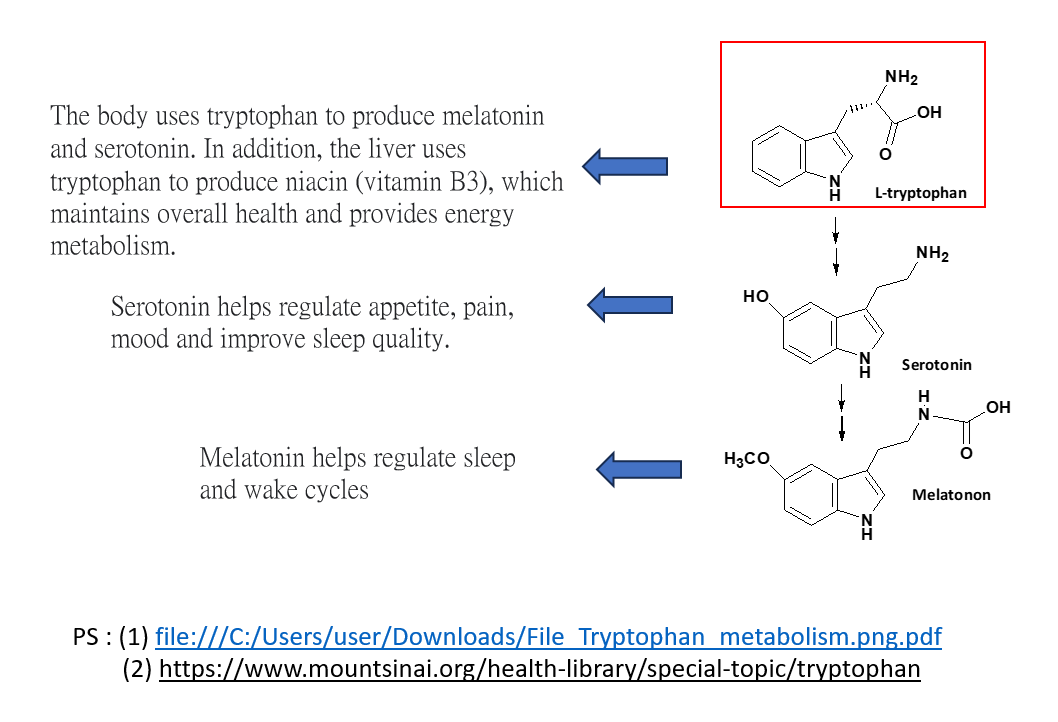Our Services
Our Services
Targeted Metabolomic
Quantification of Short Chain Fatty Acids (SCFAs)

Quantitative analysis of short-chain fatty acids (SCFAs) is a method used to measure the concentration of SCFAs in biological (organism). SCFAs are organic compounds produced (by gut bacteria during the metabolism of dietary fibers), including acetic acid, propionic acid, butyric acid, and others. These molecules play important physiological roles in the gut, such as providing energy and maintaining gut health. In our laboratory, we use ultra-performance liquid chromatography-tandem mass spectrometry (UPLC-MS/MS) technology to separate, quantify and identify SCFAs within the samples. During the analysis, internal standards (such as butyric acid-2,2,3,3-d4) can be used for calibration to improve the accuracy of the measurement results. Quantitative analysis of SCFAs is significant importance in studying gut health, dietary fiber metabolism, probiotic functionality, and other related areas. By analyzing the composition and concentration of SCFAs in detail, we can understand their impact on human health and provide valuable data for relevant research.
Quantitative Analysis of L-Tryptophan

L-tryptophan metabolomics is the study of the application of L-tryptophan in the metabolic process of organisms. L-tryptophan, an essential amino acid, plays a crucial role in mood regulation, sleep, and youthfulness maintenance. Its metabolic byproducts, such as serotonin and melatonin, have an impact on the function of the nervous system. By researching the metabolism of L-tryptophan, we can delve deeper into the mechanisms of emotional and sleep-related health issues, potentially leading to the development of related therapies. Future studies will also contribute to revealing the significant role of L-tryptophan metabolism in neuroscience and biochemistry.
TCA quantitative analysis

The tricarboxylic acid cycle (TCA cycle), also known as the Krebs cycle or the citric acid cycle, is one of the key processes involved in energy production and metabolism in organisms. TCA quantification analysis is a method used to measure the levels of various key intermediates in the TCA cycle within biological (organism). The TCA cycle intermediates are typically analyzed using liquid chromatography-mass spectrometry (LC-MS) techniques. This method allows for the separation, quantification, and identification of TCA cycle intermediates in the sample. Common TCA cycle intermediates include acetyl-CoA, citrate, and succinate. TCA quantification analysis has important applications in biomedical research, metabolic disease studies, and pharmaceutical development. By quantifying the levels of individual TCA cycle intermediates, we can gain insights into the energy metabolism status, regulation of metabolic pathways, and changes in disease states within the body. Additionally, TCA quantification analysis can also be used in the agricultural field to assess the energy metabolism and growth status of crops.
Glycolysis quantification

Glycolysis is the metabolic pathway which organisms utilize glucose to generate energy. Glycolysis quantification analysis is an analytical method used to measure the concentrations of key metabolites in the glycolysis pathway within biological systems. Liquid chromatography-mass spectrometry (LC-MS) technology is commonly used for conducting glycolysis quantification analysis. This method enables the separation, quantification, and identification of glycolytic metabolites in samples. Common glycolytic metabolites include glucose, pyruvate, lactate, and others. Glycolysis quantification analysis has broad applications in biomedical research, metabolic disease research, and the field of biotechnology. By quantifying key metabolites in the glycolysis pathway, we can gain insights into cellular energy metabolism, metabolic pathway regulation, and changes in disease states. Furthermore, these analytical results can be applied in the production of biopharmaceuticals and biofuels to optimize the yield and quality of metabolic products.
Quantitative analysis of Urea cycle

Urea cycle quantification analysis is a method used to measure the synthesis of urea、intermediate metabolites and the activity of related enzymes in the metabolic process of the human body. It provides insights into the functional status of the urea cycle by measuring the rate of urea synthesis and the activity of key enzymes. This includes isotopic tracing techniques to measure the rate of urea synthesis and the determination of enzyme activities such as arginase, ornithine transcarbamylase, and carbamoyl phosphate synthetase. These analysis results provide information related to ammonia metabolism and help to understand diagnosis and treatment of ammonia metabolism disorders and urea cycle-related diseases.
Targeted Metabolomics

Our testing team is dedicated to serving your needs with utmost technical expertise. When it comes to the challenging task of quantifying complex trace analytes, our ACQUITY UPLC XeVO-G3-QToF system, combined with years of research experience and unrivaled technical proficiency, allows us to swiftly and accurately quantify even the most intricate natural compounds, metabolites, and clinical test matrices. We take pride in providing precise testing for your experiments. Our services are customizable to meet your unique analytical requirements. Please feel free to contact us for consultation and further discussion.
Untargeted Metabolomics
Small Molecule Characterization

Customized untargeted Metabolomics
Customized experiments, analytical analysis for ingredient confirmation or qualitative physical analysis
(using Progenesis QI analysis software)
Service Process
1. Requirement
2. Confirm Options
Based on the identified needs, we propose a service plan, including service content, analysis methods, and service fees, etc., and confirm that it has been approved by the customer.
3. Sample
4. Experiments & Analysis
Perform various experiments and data analysis according to the contracted service content; report the implementation status to the client as appropriate during the implementation process.
5. Information & Reports
Provide customer related information and reports, including experimental methods and procedures, data analysis results.
1. Requirement
Please contact our center via phone or email to fill out a「Service Application Form」and provide us with your requirements. After a discussion and communication between both parties, we will confirm the service requirements.
2. Confirm Options
Based on the identified needs, we propose a service plan, including service content, analysis methods, and service fees, etc., and confirm that it has been approved by the customer.
3. Sample
The customer should provide the required analysis samples, along with a completed「Service Request Form」and send them to our laboratory via express courier.
4. Experiments & Analysis
Perform various experiments and data analysis according to the contracted service content; report the implementation status to the client as appropriate during the implementation process.
5. Information & Reports
Provide customer related information and reports, including experimental methods and procedures, data analysis results.
